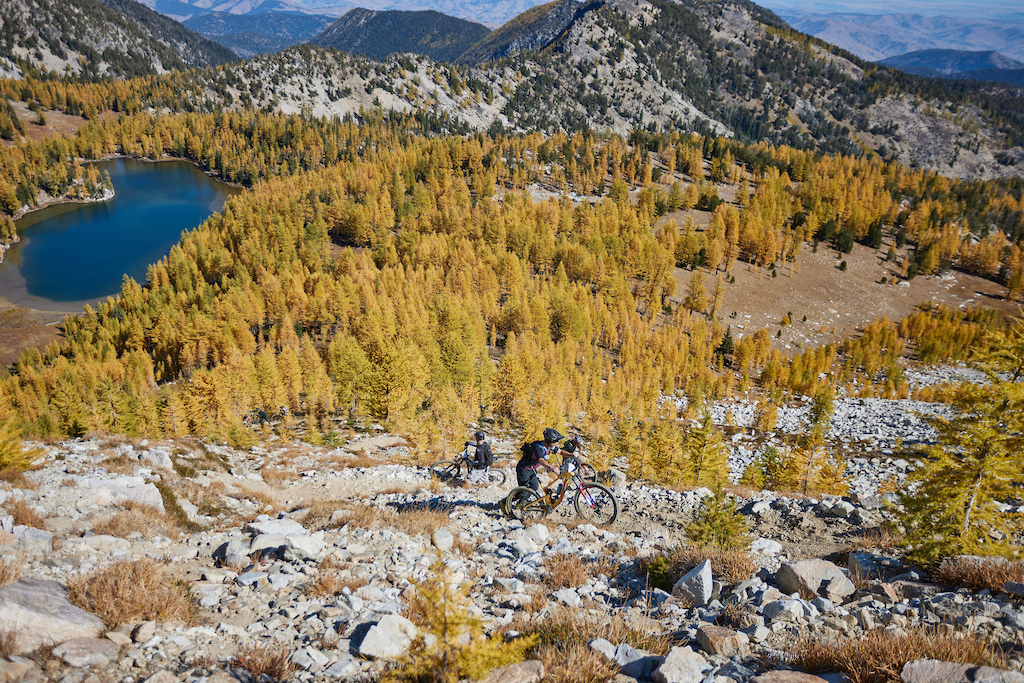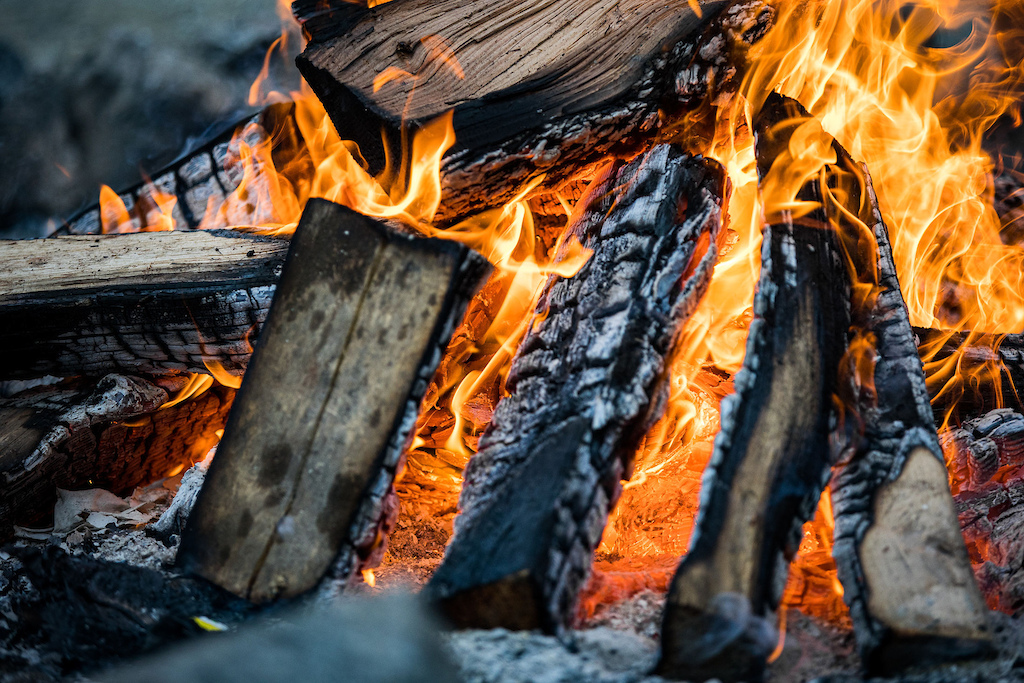Behind the Scenes in Creating the Trans-Cascadia Course
Once in a while, what goes around really does come around, and this year, the Trans-Cascadia’s years of trail stewardship were repaid in the opportunity to race remote backcountry trails that had never before been permitted for racing after half of the originally planned course burned.
Now that the dust has settled on the race season and we start to look ahead of winter to the next race season, we can reflect back on this fall’s race lest we forget what a lucky long shot it was, and the trust built with local land managers that made that long shot possible.

The race took place outside of Twisp, Washington, in the Okanagan Range, the northeasternmost subrange of the Cascades.
The groundwork
A race like the Trans-Cascadia doesn’t just happen by accident. Trans-Cascadia Inc is not only a race committee but a trail advocacy organization that has helped restore and maintain roughly 500 miles of backcountry trails in Oregon and Washington, even fully bringing back to life more than 100 miles that had long been forgotten. In 2021 alone, Trans-Cascadia maintained and opened 108 miles of backcountry trails and cleared 46 miles of access roads, including in the region used for the race that would take place in the Methow Valley Ranger District of the Sawtooth backcountry, outside of Twisp, Washington.
According to the Trans-Cascadia website, backcountry trails are endangered by three factors: lack of maintenance, lack of advocacy, and lack of funding. The race itself helps with the funding piece as well as the awareness of how special these raw, remote places are, which can also help create momentum around the advocacy piece. From there, as long as there are people who care and are able to do the work, it can happen.
The Trans-Cascadia, as a whole, isn’t strictly a race, the organization behind the race, or a trail stewardship group. It’s all of that, because all those pieces are so essential to what the Trans-Cascadia does.
The race organizers first set eyes on the 2021 race zone in 2019, and over the course of several work parties, restored the trails for what was to be the third and fourth days of the four-day race in Washington’s eastern Cascades. The plan was to then prep the first two days after the third and fourth days were finished, as the latter half was remote and would take more time to make raceable. The trails, which hadn’t seen work in a long time, were no joke to get up and running, but through dedication from volunteers and staff trail workers alike, they were revived.
The trails burn
Unfortunately, as the trails were finally finished in August, forest fire season in the Cascades caught up. Just five weeks before the 2021 race, the Trans-Cascadia organizers had to watch from afar as their hard-earned miles of trail were destroyed by flames, throwing into question whether the event would happen. Days 3 and 4 of racing were wiped away. When an organization puts everything it has into creating just one big race per year, there’s a whole lot at stake for that one event. It's a big deal if it's ruined.
Still, the Trans-Cascadia backcountry race is all about resilience and pushing onward even when things get hard, so it’s fitting that the race crew did just that.
Rising from the ashes
In the days after the fires engulfed the zone, the Trans-Cascadia met with “local conspirators” who understood what the event meant, not just for the racers and those out to have a good time, but for the entire system of trails. “Our reputation preceded us,” Alex Gardner, part of the Trans-Cascadia leadership explained.
In six years of trail restoration, Trans-Cascadia has redefined a way of looking at trails that treats regions not as individual, one-off trails to be ridden and raced, but as whole networks. “What ended up happening to these networks is that spots of them get worked on, but no organization has been able to complete an entire network, so we always come into these things trying to see how we can improve the entire network. And they generally are dense networks that allow us to host at least two days of the race there,” Gardner said. When Trans-Cascadia sets out to build a race course, way more trails end up restored than the ones that are raced in the end – plus the service roads to access them.

Change of plans: the racers would be taken on an adventure ride (and hike) that had seen few bike tires before. Photo: Mike Thomas
Before the planned 2021 race, work parties had cleared and brushed a trail system that included some classic alpine trails that had fallen by the wayside over the past decade, trafficked primarily by hikers and heavily geared-up moto riders. When those trails burned, the local land managers gifted Trans-Cascadia the permits for one-off use of hiking trails and historic moto trails that are currently unmapped for the final two days of racing. (The first two days’ courses remained unburned.)
Still, while the permitting piece was an important step, the hardest work on the new trails was yet to come. The Trans-Cascadia had hired two full-time trail workers who worked relentlessly to make the trails raceable with just 10 days to go before showtime, eventually creating a course for two remote, brutal days of racing in addition to the planned first two days. The work crew completed the second and third days' courses on the first and second race days, respectively.
Astonishingly, when it came down to the wire, the race actually worked. There were trails, and they were awesome.

At the race, we were in our own idyllic little world, but the fires still raged in the background. Photo: Mike Thomas
The takeaways
The Trans-Cascadia’s success this year is an example of those lucky times when multiple user groups can come together, recognize their common interests, and find solutions that will benefit not only the mountain bikers but the moto riders and entire communities. On the bureaucratic side, three different forest regions were part of the conversation about what to do and where to go. Those land stewards, luckily, were also mountain bikers, moto riders, and outdoors folk who, alongside their jobs, could recognize the value of the work the Trans-Cascadia put into the area’s trail systems that would benefit all the area’s outdoor recreators. The Forest Service not only allowed the Trans-Cascadia to ride trails that had never otherwise been permitted for mountain biking, but worked with the Trans-Cascadia to make it as fun, gnarly, and successful an event as possible. Trans-Cascadia credits that entirely to the organization having done right by the Forest Service in the past and having built the vast amount of trust required to race sensitive trails.
“I think that’s the real treat. All this shit is unrideable before you guys get there,” I was told, only made rideable by crews clearing the trails ahead of us as we raced. Those trails had seldom, if at all, seen mountain bikes before (understandably, as they were a bit of a pain to get to), and remained unmapped so they will see few mountain bikers again. Riding them was a fleeting, unique moment in time – a gift that the race organizers attribute, over and over, to the mutually beneficial stewardship relationships they’ve built.
It's funny how things come together in a crisis sometimes, and this year, the people behind the Trans-Cascadia believe that the race turned out even better than they could have originally planned. Having to figure out some trails in a time crunch led them to lean into their relationships with land managers to dig far beneath the surface of what we could have raced. Even better, having restored the trails, brushed them out, and made lots of local moto riders very happy, the Trans-Cascadia has abided by the campsite rule: they left the area better than they found it. One foot of trail at a time, the organization is continuing to build the trust that'll make for even wilder racing in the years to come.
Author Info:
Must Read This Week
Sign Up for the Pinkbike Newsletter - All the Biggest, Most Interesting Stories in your Inbox
PB Newsletter Signup




If that’s the case the I don’t see a reason not to map them and post them on Trailforks for their respective uses. There’s a lot of non-MTB trail content on Trailforks already.
Good for you to get special permission from your friends at the Forest Service to kill vegetation on illegal trails that only rich people get to ride once (sarcasm).
Also, thanks for adding some stuff to Trailforks, can you please provide the links in your Race Reports?
How the hell am I the entitled one?
This is insane, they let TC race on “hiking only” trails?
To me the biggest factor for a lot of these is a lack of tires. I know one trail TC brushed out quite a while back (Grasshopper) got pretty overgrown until it became more popular among locals and out of towners.
Last year they reported that the "great American outdoors act" became law (July 22, 2020) and that it was supposed to (theoretically) cause lots of good stuff for outdoor projects ($1.3 billion per year). I'm curious if this has effected the mtb trail building this year in any way. It seems related to trail advocacy.
If it has it'd be cool to see an article on the improvements that have happened.